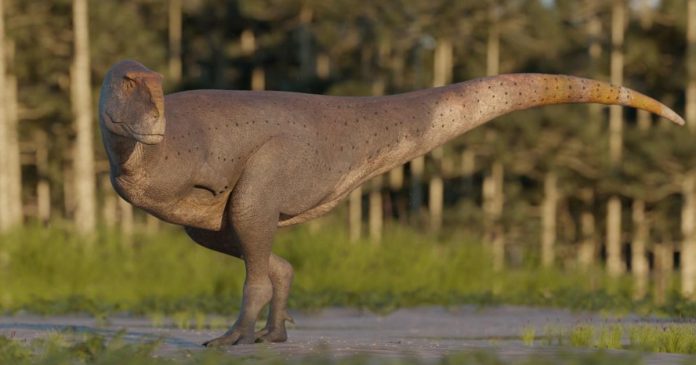Newly Discovered Dinosaur with Tiny Arms Challenges T-Rex’s Dominance
Move over T-Rex, there’s a new dinosaur in town with even tinier arms! Meet Koleken inakayali, the latest addition to the abelisaurid group of carnivores. Just like its famous cousin, Koleken had minuscule arms that were seemingly useless. Some experts believe that these dinosaurs simply evolved out of the need for arms, prioritizing their deadly bite instead. However, others speculate that they could have used their arms for close-up kills.
Images of what Koleken might have looked like are both fascinating and amusing. The creature was a muscular killing machine, except for its comically small arms. Imagine a fearsome predator with a jaw that could pulverize its prey, but with arms resembling fins. It’s a sight that would make anyone chuckle, although we wouldn’t dare say it to Koleken’s face!
The discovery of Koleken inakayali was made by National Geographic explorer Dr Diego Pol and a team of researchers and paleontologists. They found a partial skeleton, including skull bones, back bones, a complete hip, tail bones, and almost complete legs. This finding provides valuable insights into the diversity of abelisaurid theropods in Patagonia just before the mass extinction event.
Living 70 million years ago during the Late Cretaceous Epoch, Koleken coexisted with another famous dinosaur, Carnotaurus sastrei, also known as the ‘meat bull’ from Jurassic World. The rock formation where Koleken was discovered is considered one of the most important end-Cretaceous dinosaur-bearing rock units in the world. This remarkable finding significantly contributes to our scientific understanding of the dinosaur era.
In conclusion, Koleken inakayali may have had tiny arms, but it has left a big impact on the world of paleontology. This fascinating discovery challenges our preconceived notions about dinosaur anatomy and sheds light on the incredible diversity that once roamed the Earth.

